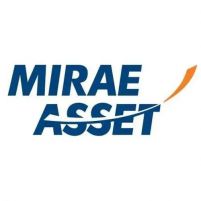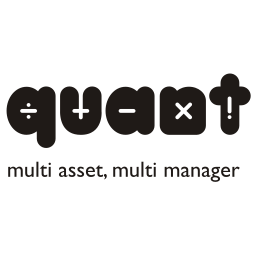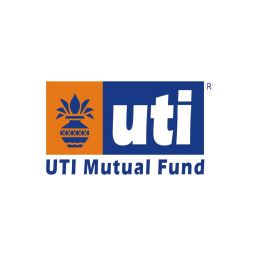Best ELSS funds A.K.An equity-linked savings schemes are tax-advantaged equities that let you save money while investing for your long-term objectives. These securities have the shortest lock-in duration of all Section 80C assets, at just 36 months.
Letting you provide tax exemptions of up to Rs 1,50,000 per year. Helping you with a three-year lock-in term plus zero provisions for early withdrawal. Providing you with tax benefits as well as the opportunity to build wealth. And so on.
These all reflect that spending on ELSS is worth it. However, spending on the top schemes is a bonus! So, let's recognize the top ELSS funds of today!
Also Read: best icici mutual funds, best mutual funds to invest for long term & best debt funds india
Best ELSS Funds
Want to jump straight to my top picks? My favorite best elss funds is Mirae Asset Tax Saver and IDFC Tax Advantage(ELSS) Fund.
1. Mirae Asset Tax Saver

The Mirae Asset Tax Saver Fund Direct-Growth scheme invests in firms that have produced long-term, tangible, and stable earnings growth.
Its returns of the previous year were 8.07 percent. Plus, it has returned an average of 19.78 percent per year since its inception.
details
2. Quant Tax Plan

Quant Tax Plan Direct-Growth intends to achieve capital gain by investing primarily in growth-oriented equity shares.
Its one-year growth rate is 16.11 percent and has returned an average of 20.88 percent every year since its beginning.
details
3. Kotak Tax Saver

The one-year yields of Kotak Tax Saver are 8.03 percent. It provides constant returns, i.e.,
comparable to that of most products in its classification.
Its strategy attempts to achieve long-term capital growth by investing in a diverse portfolio of stocks and stock-related instruments.
details
4. UTI Nifty Index Fund

UTI Nifty Index Fund aims to invest in shares of firms that make up the Nifty 50 Index to attain passive investment gains comparable to the Nifty 50 Index.
HDFC Bank Ltd, ICICI Bank Ltd, and Reliance Industries Ltd are some of its major holdings.
details
5. Canara Robeco Equity Tax Saver Fund

Canara Robeco Equity Tax Saver Direct has a one-year growth rate of 5.61 percent.
It has generated an average yearly return of 15.26 percent since its inception.
Technology, Energy, and Healthcare are among its major sectors.
details
6. PGIM India ELSS Tax Saver Fund

This ELSS mutual fund plan's ability to provide constant results is comparable to most products in its bracket.
It has an above-average capacity to minimize losses in a sinking economy.
The one-year performance of the PGIM India ELSS Tax Saver Fund is 3.40%.
details
7. BOI AXA Tax Advantage Fund

The recent one-year returns of this elss scheme by Bank Of India Mutual Fund are -2.60 percent.
It has returned an average of 16.10 percent per year since its inception.
ICICI Bank Ltd, Reliance Industries Ltd, and HDFC Bank Ltd are some of its top holdings.
details
8. Mahindra Manulife ELSS kar Bachat Yojna

Mahindra Manulife ELSS Kar Bachat Yojna aims to achieve long-term capital growth through a diverse portfolio of equities and equity-related assets.
It has a one-year growth rate of 2.13 percent. Plus, it has returned an average of 11.54 percent per year since its inception.
details
9. DSP Tax Saver Fund

DSP Tax Saver Fund adopts a bottom-up investment strategy, focusing on portfolio allocation in growth and appreciation-oriented businesses.
It has a 1-year yield of -0.28 percent and has an average yearly return of 16.03 percent since its inception.
details
10. IDFC Tax Advantage(ELSS) Fund

The last one-year returns on the IDFC Tax Advantage(ELSS) Fund are 3.26 percent.
It has had an average yearly return of 16.81 percent since its start.
details
11. Baroda BNP Paribas ELSS Fund

Baroda BNP Paribas' 1-year earnings are -4.83 percent.
It has returned an average of 13.46 percent per year since its commencement.
Every six years, the fund has doubled the capital invested in it.
details
12. Navi ELSS Tax saver fund

Navi ELSS Tax Saver Fund had a 1-year yield of -0.96 percent. It has returned an average of 11.47 percent per year since its commencement.
Every seven years, the scheme has doubled the amount spent.
details
13. SBI Long Term Equity Fund

SBI Long Term Equity Fund has a 1-year rise of 0.57 percent. It has returned an average of 12.94 percent per year since its debut.
Every three years, the scheme has doubled the amount invested.
details
14. Tata India Tax Saving Fund

The last one-year results on Tata India Tax Savings Fund are 2.42 percent. It has had an average yearly return of 15.82 percent since its beginning.
Every three years, the program has doubled the amount invested.
details
15. HSBC Tax Saver Equity Fund

The 1-year returns for the HSBC Tax Saver Equity Fund are 0.32 percent.
It has returned an average of 12.85 percent every year since its inception. Every three years, the scheme has 2x the amount spent.
details
Who Should Invest in ELSS Funds?
By investing in ELSS mutual funds, in a long-term plan, you can save your tax. For this reason, many people make it the first choice for investment.
Who can invest?
- Salaried employees :
If you are a salaried individual, then there may be some deduction from your salary that goes to your EPF account.
But if you want to make some extra savings, then this ELSS will be the best option. By investing in ELSS you can save your tax that is under section 80C.
Some other mutual funds like ULPs also offer tax benefits, but they give it with a higher lock-in period, that is for 5 years. But at ELSS funds you can have the shortest three years of the lock-in period. - Those who are investing for the first time:
For first-time investors, the ELSS is the best choice. Here you can benefit from your tax and get a flavor of equity investing and mutual funds.
Some investors lose this patience, due to short-term fluctuations of their funds due to market movement. As ELSS has a short lock-in period, and it allows investors to invest through SIP, it is a good choice for all to invest here.
How does ELSS Fund work?
Some other mutual funds offer a higher lock-in period with a lesser amount in return potential. For example, ULIPs have five years lock-in period, and PPFs have 15 years lock-in period.
But as compared to them the ELSS mutual funds give the shortest three years of lock-in period and through investing here you can save your tax. So these reasons make the ELSS mutual fund the right place for investors.
Here to know how ELSS mutual funds work for their investors:
ELSS Funds are known as diversified equity funds. These funds primarily invest in the equities of a variety of publicly-traded companies in a certain proportion on the basis of the fund's investment objective.
Through the industry service and market capitalization such as large capitalization, mid or small capitalization you can choose the sock.
On a long-term plan, these funds will maximize your capital appreciation. The fund manager checks the stock value after researching the current market situation, to give you optimally adjusted returns.
How to Evaluate the Best ELSS Mutual Funds?
ELSS mutual funds are mainly popular as tax saver mutual funds. Through investing in ELSS, you can save your tax up to 15000.00 Rs. This is one of the top mutual fund investments for this purpose.
How to Evaluate Them:
You should analyze all the fund's performance to the previous year's results to confirm that it is consistent. After getting the final result, you can invest your funds.
But the past performance can't predict your future return amount. That completely depends on the current market situation and fund managers' decisions.
- History of funds: Only choose those platforms that are constantly working for a long period, maybe 5-10 years.
- Expense ratio: You can check the investment amount needed to manage your fund with the expense ratio. If there is a lower expense ratio, that will give you a higher return.
- Financial ratios: To analyze the performance of different funds, there are many parameters, such as Sharpe ratio, alpha, standard deviation, beta, etc. Funds with a higher Betas offer better returns in trade for investing directly.
Advantages of ELSS Fund
- It helps you save money on taxes: ELSS gives tax benefits under Section 80C and aids in asset accumulation.
The ELSS funds' stock investment allows you to achieve good returns if you invest for at least five years. - The shortest lock-in period time: ELSS mutual funds give their investors a three-year shortest lock-in period, with all tax-saving options. So it is the right choice for the new investors.
- Fund managers with extensive experience: Every fund manager that selects just the better securities in the long run will benefit investors.
- Option to invest on a monthly basis: You can invest in ELSS funds using a SIP of at least Rs 1000. Furthermore, there is no limit to the investment amount
Risk of ELSS fund
As it invests in equities and stock-related securities, ELSS funds, like all other mutual fund products, are susceptible to market risk.
The ELSS Mutual Funds invest in equities, which might be unstable in the short-term planning. If you plan to invest for a long time, you will have less anxiety about losing money.
On the basis of the fund's investment objective, these funds primarily invest in the equity of a variety of publicly traded firms in a set proportion.
However, these risks can be greatly reduced by making a good decision and staying invested for at least five years. In addition, the three-year required lock-in term greatly minimizes the danger.
Things to consider before investing
Before making plans for investing money in ELSS mutual funds, every investor should think about the following factors.
- Period of confinement:
ELSS mutual funds have the same rule as other different tax-saving investing options. ELSS also has a lock-in period, and ELSS is a three-year program that is compulsory.
You can't withdraw your money before its maturity. For this reason, investors have to complete the lock-in period, which is a minimum of three years, to get the actual profit value. - Risk factor:
In ELSS mutual funds, the value of equity changes regularly, depending on the current market strategy result.
So that the fund's value will be oriented to the equity fund, for this reason, the investors should accept all the risk factors that come with the profit. - Investments through SIP
You can invest through ELSS mutual funds as part of a systematic investing plan (SIP). Most investors choose SIP as a part of their investment because they make an investment in different firms over time.
Through SIP, you can invest a small amount in the same time interval with a long-term benefit.
Taxation on ELSS Funds
If you are investing through ELSS funds with a long-term plan, you can save your tax directly. ELSS funds are multi-invested funds. Generally, you can invest in stocks of different top listed companies with a specific amount through the ELSS funds.
That amount depends on your investment objective. You can choose the stock through the industry service and market capitalization such as large capitalization, mid or small capitalization.
These funds will optimize your capital appreciation if you invest for the long term. After investigating the current market environment, the fund management evaluates the stock value in order to provide you with the best-adjusted returns.
Conclusion
The ELSS mutual funds become the investor's best choice of any mutual fund product. Investing here will save you from giving extra taxes, and this is the only mutual fund service that gives you a short lock-in period.
For new investors who want to get an early return, it is suitable for them as its fund program starts from a minimum of three years.
But your return depends upon the current market situation and your stock value. The values of money will always be oriented. So be patient and wait for some time when the weights increase. You can do some market research also before getting back your fund.
Frequently Asked Questions
Q1. Which is the best ELSS fund in India?
ELSS mutual funds are the best choice for investors, as it gives more valuable options for the investors. You can save your tax by investing through the ELSS mutual funds.
However, Franklin India tax shield fund, L&T tax advantage fund, HDFC Tax saver fund, Quantum tax-saving fund, Aditya Birla sun life tax relief 96 funds, and Nippon India tax saver fund are some best ELSS funds in India, to give you the better investment result with a short time.
Q2. Is ELSS taxable after 3 years?
Long-Term Investment Income on ELSS mutual funds is free of tax up to Rs 1 lakh, while the dividends are free of tax in investors' hands.
When investors' three-year lock-in deadline has passed, they can keep investing in this scheme.
After the three-year lock-in period, the investor redeemed the ELSS for Rs 3 lakh, of which Rs 1.5 lakh is tax-free under the rules. Thus, after subtracting Rs 1.5 lakh from Rs 3 lakh, taxable income equals Rs 1.5 lakh.
Q3. Do ELSS funds give good returns?
No doubt you can get good returns from ELSS mutual funds compared to any other mutual fund service providers. But there is also a low chance for an investor to get down or sometimes negative amount returns.
As the stock value depends on the current market situation, it will be beneficial for you if you are making a plan for a long-term investment for more than three years.
Q4. Are ELSS funds high risk?
Most investors aren't aware of the added risk associated with ELSS products. Because all ELSS funds are equities funds at their core, they have higher risks than debt securities.
When compared to different other tax-saving options, ELSS funds have the best potential for returns, but these returns come with a risk. This is because equities are seen as a hazardous asset class that is subject to market volatility and swings.
Also Read: Check out my reviews of the best image editing software, the top choices for video editing software, and my full guide to start a blog for beginners.

